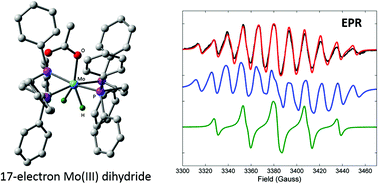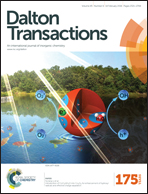EPR detection and characterisation of a paramagnetic Mo(iii) dihydride intermediate involved in electrocatalytic hydrogen evolution†
Abstract
EPR spectroscopy and theoretical data show that the slow heterogeneous electron-transfer kinetics associated with the reduction of an 18-electron Mo(IV) acetato dihydride are a consequence of an η2–η1 rearrangement of the carboxylate ligand which gives a unique paramagnetic 17-electron Mo(III) dihydride.


 Please wait while we load your content...
Please wait while we load your content...